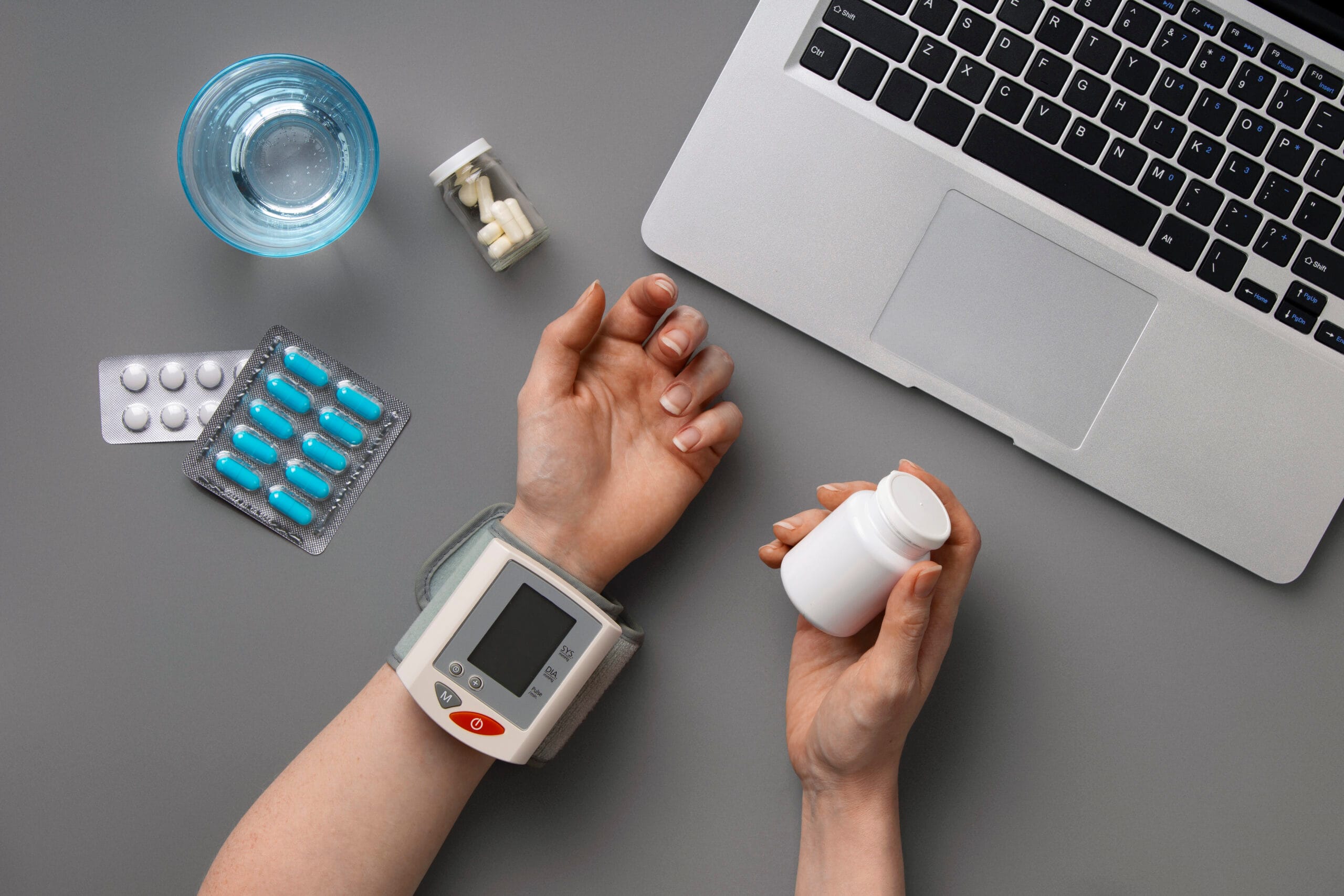|
Getting your Trinity Audio player ready... |
Pharmacology of Diabetes: A Comprehensive Guide
Diabetes is a widespread and growing global health concern, affecting over 450 million people worldwide, with a rising number of diagnoses linked to obesity and lifestyle factors. Effective diabetes management is crucial, as the disease is associated with numerous complications, including retinopathy, neuropathy, cardiovascular disease, and increased risk of stroke. While lifestyle changes like diet and exercise are critical, pharmacological interventions are central to managing diabetes, particularly for Type 2 diabetes (T2D), which is primarily characterized by insulin resistance.
This guide focuses on the pharmacology of diabetes, reviewing insulin therapy and the main oral hypoglycemic agents used in T2D, including their mechanisms, side effects, and clinical considerations.
Type 1 vs. Type 2 Diabetes
- Type 1 Diabetes (T1D): An autoimmune condition where the immune system destroys insulin-producing beta cells in the pancreas, leading to a complete lack of insulin. Insulin therapy is always required for T1D.
- Type 2 Diabetes (T2D): Caused by insulin resistance and is most common in adults. The body still produces insulin, but it is ineffective, leading to high blood glucose levels. T2D accounts for 90% of diabetes cases.
Insulin Pharmacology
Insulin is essential for both managing T1D and controlling blood glucose levels in T2D. It also has emergency uses, such as treating diabetic ketoacidosis and hyperkalemia, as it facilitates potassium uptake into cells.
- Types of Insulin: Insulin is classified based on its duration of action:
- Fast-acting insulins: Regular insulin, lispro, glulisine.
- Intermediate-acting insulins: Isophane insulin, insulin zinc.
- Long-acting insulins: Insulin glargine, insulin detemir.
- Ultra-long acting insulin: Insulin degludec.
- Side Effects of Insulin:
- Hypoglycemia: The most common adverse effect.
- Hypokalemia: Due to potassium shifting into cells.
- Fat accumulation at injection sites: Resulting from repeated insulin injections.
- Renal impairment: Slows insulin elimination, increasing hypoglycemia risk.
Sensitizers
Sensitizers target insulin resistance, a hallmark of T2D.
- Biguanides (Metformin):
- Mechanism: Decreases hepatic glucose production, enhances glucose uptake by muscle, and inhibits intestinal glucose absorption.
- Advantages: Does not cause weight gain and is well-tolerated.
- Side Effects: Gastrointestinal upset (e.g., nausea, diarrhea), metallic taste, lactic acidosis (rare), and vitamin B12 deficiency with long-term use.
- Contraindications: Severe renal impairment and liver disease.
- Thiazolidinediones (Pioglitazone, Rosiglitazone):
- Mechanism: Activates PPAR-gamma to enhance insulin sensitivity, reduce gluconeogenesis, and increase glucose uptake in skeletal muscle.
- Side Effects: Weight gain, fluid retention, increased risk of fractures (especially in women), gastrointestinal upset, anemia, dizziness, and headache.
- Caution: Rosiglitazone has been suspended in Europe due to cardiovascular concerns. Pioglitazone can increase the risk of bladder cancer.
Secretagogues
Secretagogues increase insulin secretion.
- Sulfonylureas (Gliclazide, Glipizide, Glyburide):
- Mechanism: Bind to potassium-ATP channels on pancreatic beta cells, leading to insulin release.
- Side Effects: Hypoglycemia, weight gain, gastrointestinal upset, and rare hepatotoxicity or agranulocytosis.
- Meglitinides (Repaglinide, Nateglinide):
- Mechanism: Similar to sulfonylureas but act on different sites of the potassium-ATP channels.
- Side Effects: Hypoglycemia, flu-like symptoms, and gastrointestinal disturbances.
Alpha-Glucosidase Inhibitors
Alpha-glucosidase inhibitors slow carbohydrate digestion and glucose absorption.
- Examples: Acarbose, Miglitol.
- Mechanism: Inhibit alpha-glucosidase enzymes in the intestine, slowing carbohydrate breakdown and glucose absorption.
- Side Effects: Flatulence, bloating, and diarrhea.
- Efficacy: They have a modest effect on lowering HbA1c and postprandial glucose.
Peptide Analogs
Peptide analogs include GLP-1 receptor agonists and DPP-4 inhibitors, both of which enhance insulin secretion.
- GLP-1 Agonists (Exenatide, Liraglutide):
- Mechanism: Stimulate insulin release and suppress glucagon secretion, promoting glucose-dependent insulin secretion.
- Side Effects: Gastrointestinal symptoms (nausea, vomiting), weight loss (a rare benefit), and headache. Rarely, they may cause pancreatitis.
- DPP-4 Inhibitors (Sitagliptin, Saxagliptin, Linagliptin):
- Mechanism: Inhibit DPP-4 enzyme, preventing the breakdown of GLP-1 and prolonging its insulinotropic effects.
- Side Effects: Joint pain, headache, nausea, and a slight increase in heart failure risk.
Glycosurics
Glycosurics promote glucose excretion through the urine.
- SGLT-2 Inhibitors (Canagliflozin, Dapagliflozin, Empagliflozin):
- Mechanism: Inhibit the sodium-glucose co-transporter 2 (SGLT-2) in the kidneys, preventing glucose reabsorption and increasing urinary glucose excretion.
- Side Effects: Increased risk of diabetic ketoacidosis, urinary tract infections, genital fungal infections, hypoglycemia (less common than sulfonylureas), thirst, and elevated LDL cholesterol.
- Considerations: There is ongoing research regarding their potential cardiovascular benefits.
Clinical Considerations
- Metformin should be avoided in severe renal impairment due to the risk of lactic acidosis. It also interacts with drugs like corticosteroids and diuretics, which may raise blood sugar levels.
- Insulin clearance is reduced in patients with renal impairment, increasing the risk of hypoglycemia.
- Thiazolidinediones are contraindicated in patients with heart failure due to fluid retention and worsening edema.
- SGLT-2 Inhibitors may lead to genital infections and dehydration, so monitoring is essential.
- Patients with T2D should be monitored for the cardiovascular effects of different antidiabetic medications, especially thiazolidinediones and SGLT-2 inhibitors.
Conclusion
Diabetes pharmacology involves a variety of drug classes designed to manage blood glucose levels and prevent complications. Insulin therapy is essential for both Type 1 and Type 2 diabetes, while other medications like metformin, sulfonylureas, and SGLT-2 inhibitors address different aspects of insulin resistance and secretion. Understanding the mechanisms, side effects, and clinical considerations of these drugs is essential for effective diabetes management. This guide provides a comprehensive overview to help healthcare professionals make informed decisions when treating diabetes patients.
